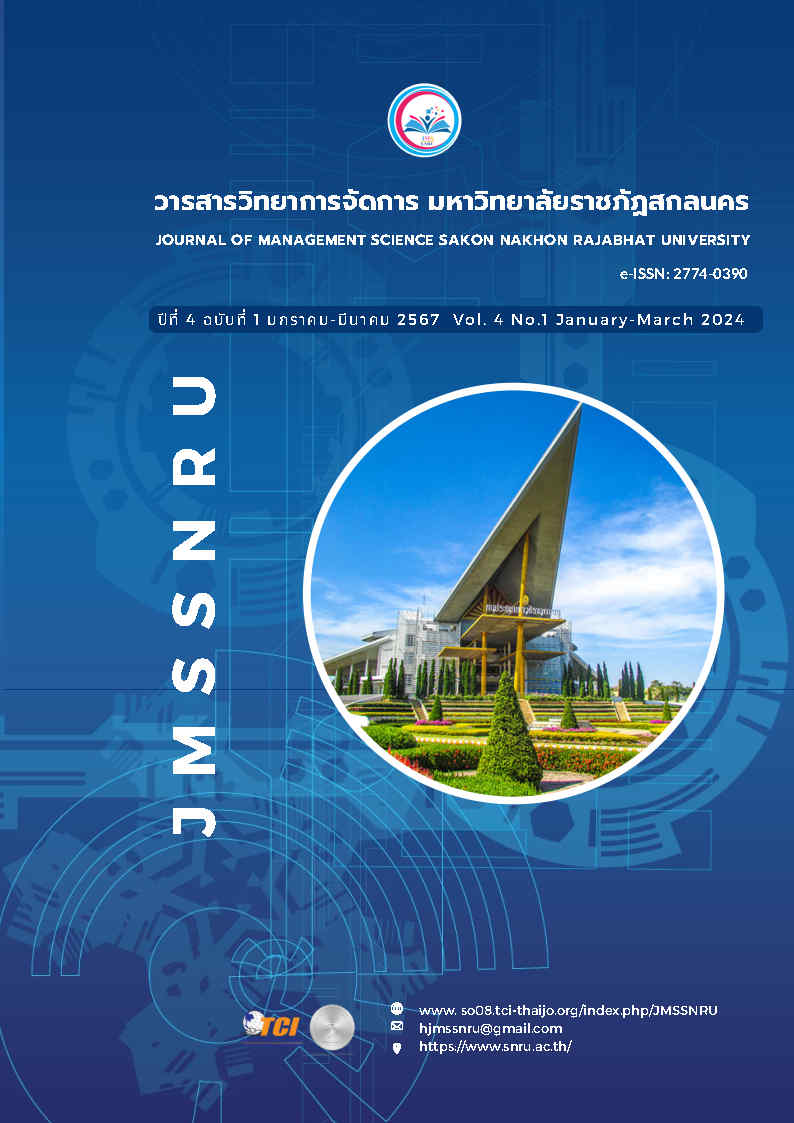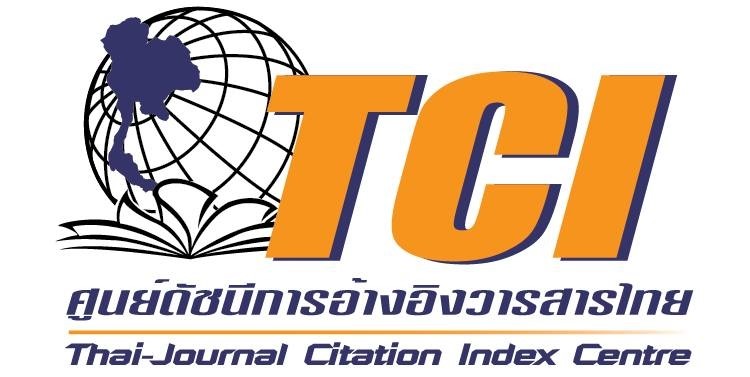แรงจูงใจ และกลยุทธ์การตลาดบริการ ที่ส่งผลต่อการตัดสินใจเลือกใช้แอปพลิเคชัน สั่งอาหารของผู้บริโภคในอำเภอเมือง จังหวัดอุตรดิตถ์
คำสำคัญ:
การตัดสินใจ, กลยุทธ์, การตลาดบริการ, แรงจูงใจ, แอปพลิเคชันสั่งอาหารบทคัดย่อ
การวิจัยครั้งนี้มีวัตถุประสงค์เพื่อ 1) ศึกษาระดับความสำคัญของแรงจูงใจ และกลยุทธ์การตลาดบริการสำหรับผู้ใช้แอปพลิเคชันสั่งอาหาร และ 2) ศึกษาแรงจูงใจ และกลยุทธ์การตลาดบริการ ที่ส่งผลต่อการตัดสินใจเลือกใช้แอปพลิเคชันสั่งอาหารของผู้บริโภคในอำเภอเมือง จังหวัดอุตรดิตถ์ ประชากร คือ ผู้บริโภคที่เคยใช้บริการแอปพลิเคชันสั่งอาหารในจังหวัดอุตรดิตถ์ กลุ่มตัวอย่าง จำนวนเท่ากับ 385 คน โดยวิธีการสุ่มอย่างง่าย เครื่องมือที่ใช้ในการวิจัย คือ แบบสอบถาม สถิติที่ใช้ในการวิเคราะห์ข้อมูล ได้แก่ ความถี่ ร้อยละ ค่าเฉลี่ย ส่วนเบี่ยงเบนมาตรฐานและการวิเคราะห์การถดถอยพหุคูณด้วยวิธี Enter ผลการวิจัย พบว่า ผู้ใช้บริการแอปพลิเคชันสั่งอาหารให้ความสำคัญกับแรงจูงใจอยู่ในระดับมาก โดยแรงจูงใจภายในมากที่สุด รองลงมา คือ แรงจูงใจภายนอก ผู้บริโภคมักตัดสินใจเลือกใช้บริการแอปพลิเคชันสั่งอาหาร หลังจากได้ศึกษาข้อมูลรายละเอียดผลิตภัณฑ์ ภาพ ราคา และโปรโมชัน ซึ่งมีการใช้บริการสั่งอาหารออนไลน์ผ่าน Grab Food มากที่สุด รองลงมา คือ LINE MAN และ Food Panda ส่วนกลยุทธ์การตลาดบริการ พบว่า ผู้บริโภคตัดสินใจเลือกใช้แอปพลิเคชันสั่งอาหารออนไลน์ ได้แก่ 1) ด้านลักษณะทางกายภาพ มีการจัดประเภทอาหารเป็นหมวดหมู่ ง่ายต่อการสั่งซื้อ 2) ด้านผลิตภัณฑ์ มีการสร้างความเชื่อมั่นแก่ผู้ใช้บริการว่าอาหารมีรสชาติทีดี วัตถุดิบทีมีคุณภาพ และบรรจุภัณฑ์มีความเหมาะสม 3) ด้านการส่งเสริมการตลาด มีการโฆษณาประชาสัมพันธ์อย่างต่อเนื่อง 4) ด้านช่องทางการจัดจำหน่าย มีข้อมูลที่เป็นปัจจุบัน มีพนักงานจัดส่งอาหารเพียงพอ การบริการครอบคลุมพื้นที่ 5) ด้านบุคลากร มีพนักงานจัดส่งอาหารที่แต่งตัวสะอาดเรียบร้อย มีความสุภาพและอัธยาศัยดี 6) ด้านราคา มีรูปแบบการชำระเงินหลากหลาย อัตราค่าบริการมีความเหมาะสม และ 7) ด้านกระบวนการ มีขั้นตอนการสมัครและเริ่มใช้งานง่าย สะดวกและรวดเร็วตามลำดับ ผลการทดสอบสมมติฐานการวิจัย พบว่า แรงจูงใจทุกตัวมีอิทธิพลต่อการตัดสินใจเลือกใช้บริการแอพพลิเคชันสั่งอาหารออนไลน์ อย่างมีนัยสำคัญทางสถิติที่ระดับ 0.01 อธิบายค่าความผันแปรของแรงจูงใจที่ส่งผลต่อการตัดสินใจเลือกใช้บริการแอพพลิเคชันสั่งอาหารออนไลน์ ได้ร้อยละ 58.50 ส่วนกลยุทธ์การตลาดบริการ พบว่า ด้านผลิตภัณฑ์ ราคา การส่งเสริมการตลาด และด้านกระบวนการมีระดับนัยสำคัญทางสถิติที่ระดับ 0.01 ส่วนด้านช่องทางการจัดจำหน่ายกับด้านลักษณะทางกายภาพ มีนัยสำคัญทางสถิติที่ระดับ 0.05 อธิบายค่าความผันแปรของกลยุทธ์การตลาดบริการที่ส่งผลต่อการตัดสินใจเลือกใช้บริการแอพพลิเคชันสั่งอาหารออนไลน์ ได้ร้อยละ 72.90
เอกสารอ้างอิง
กฤษณา ศรีจันทร์แดง และไกรชิต สุตะเมือง. (2557). แรงจูงใจในการสมัครเข้าทำงานในกลุ่มประเทศอาเซียนของนักศึกษาระดับปริญญาโทคณะบริหารธุรกิจ. วารสารการเงิน การลงทุน การตลาด และการบริหารธุรกิจ, 4 (1).
กฤษลักษณ์ ชุ่มดอกไพร. (2564). ปัจจัยส่วนผสมทางการตลาด 7P's ที่ส่งผลต่อความพึงพอใจในการใช้บริการ ศูนย์การค้า ดองกิ มอลล์ทองหล่อ. สารนิพนธ์บริหารธุรกิจมหาบัณฑิต มหาวิทยาลัยศรีนครินทรวิโรฒ.
กัญสพัฒน์ นับถือตรง. (2564). ปัจจัยส่วนประสมทางการตลาดที่มีผลต่อการตัดสินใจใช้บริการสั่งอาหารแบบเดลิเวอรี่ ในจังหวัดสุรินทร์. วารสารวิชาการวิทยาลัยสันตพล, 7(2), 104–113.
ผู้จัดการ. (2564). Food Delivery ขยายตัวแข่งขันสูงกำเนินผู้เล่นหน้าใหม่. สืบค้น 10 มกราคม 2566. จากhttps://shorturl.asia/yaiTY.
ธัญญาทิพ พิชิตการค้า และอดิศักดิ์ วรพิวุฒิ. (2565). ปัจจัยที่มีอิทธิพลต่อรูปแบบพฤติกรรมการซื้ออาหารออนไลน์ในภาวการณ์ระบาดของโควิด. วารสารปัญญาภิวัฒน์,14(1), 1-14.
ศูนย์วิจัยกสิกรไทย. (2565). Food Delivery ปี 2565 ขยายตัวต่อเนื่อง ผู้ให้บริการแอพพลิเคชันรุกพื้นที่ต่างจังหวัดขยายฐานลูกค้าใหม่ (กระแสทรรศน์ ฉบับที่ 3289). สืบค้น 10 มกราคม 2566 จาก https://shorturl.asia/F6xuL.
สำนักงานพัฒนาธุรกรรมทางอิเล็กทรอนิกส์ (สพธอ.). (2563). ETDA เผยคน Gen – Y สั่งอาหารออนไลน์มากสุด และกว่า 40% สั่งเพราะหวั่นโควิด 19. สืบค้น 10 มกราคม 2566 จาก https://shorturl.asia/eyRnW.
สิรินยา ใจละออ, เบญจพร ปวนคำ, พิยดา ผุยชาคำ และขจรศักดิ์ วงศวิราช. (2564). แรงจูงใจในการเข้าสู่ตลาดออนไลน์ของผู้ประกอบการในจังหวัดลำปาง ผ่านแอพพลิเคชั่นฟู้ดแพนด้า. วารสารศิลปการจัดการ, 5(1).
Cochran, J. (1977). Statistical power analysis for the behavioral sciences. New York: Academic.
Cronbach, L. J. (1974). Essentials of psychological testing. (3rd ed). New York: Harper & Row.
Kotler, P. and Keller, K. (2016). Marketing Management (15th ed.). New Jersey: Pearson Education.
Kotler, P. (2012). Marketing Management (The Millennium edition). Upper Saddle River, NJ: Pearson Prentice Hall.
Loudon, D. and Bitta, A. (1988). Consumer Behavior: Concepts and Applications. (3 rd ed). New York: McGraw Hill.
Miles, J., and Shevlin, M. (2001). Applying regression and correlation: A guide for students and researchers. London: Stage.
Nunnally, J. C. and Bernstein, I.H. (1994). The Assessment of Reliability. Psychometric Theory, 3, 248-292
Orji, and Goodhope, O. (2013). Major Classic Consumer Buying Behavior Model: Implications for Marketing Decision-Making. Journal of Economics and Sustainable Development, 4, 10-n/a.
Schiffman, L. G., and Kanuk, L. L. (1994). Consumer behavior (5th ed.). New Jersey: Prentice – Hall.
ดาวน์โหลด
เผยแพร่แล้ว
รูปแบบการอ้างอิง
ฉบับ
ประเภทบทความ
สัญญาอนุญาต
ลิขสิทธิ์ (c) 2024 วารสารวิทยาการจัดการ มหาวิทยาลัยราชภัฏสกลนคร

อนุญาตภายใต้เงื่อนไข Creative Commons Attribution-NonCommercial-ShareAlike 4.0 International License.
บทความที่ตีพิมพ์ในวารสารวิทยาการจัดการ มหาวิทยาลัยราชภัฏสกลนคร เป็นทัศนะ ลิขสิทธิ์ และความรับผิดชอบของผู้เขียนเจ้าของผลงาน






